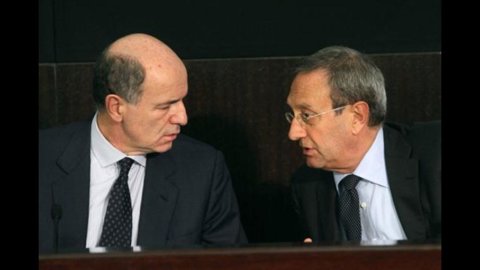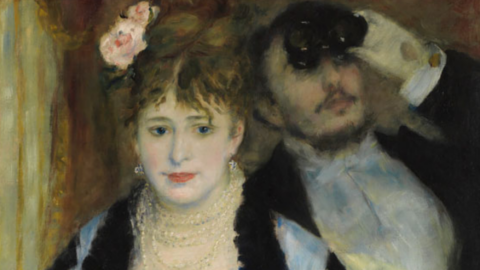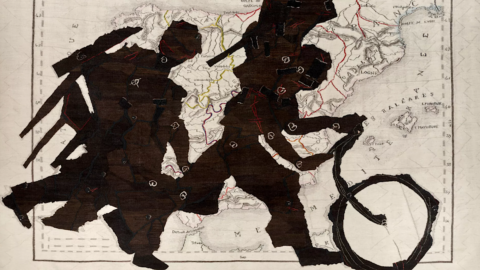Gian Lorenzo Bernini also called "the sovereign of art" was born in Naples in 1598 and about ten years later he moved to Rome with his father, also a sculptor, to carry out works commissioned by Pope Paul V.
It was the pontiff himself, reached by voices celebrating the boy's skill, who called him and ordered him to draw the head of his patron, the Apostle Paul. Nor did a drawing of extraordinary beauty emerge, such that the Pope turned to Cardinal Matteo Barberini, patron of the arts, asking him to provide for the training of the young talent. The case was providential, given that the Cardinal would become Papa Ubano VIII.
The young man spent his days in the Vatican copying the marble statues that were present in the papal collections, shortly thereafter he was commissioned works such as the bust of Pope Paul V. But his first important work was commissioned by Cardinal Scipione Borghese, nephew of Paul V. It was a series of large marble statues for his villa, Villa Borghese. Magnificent works, where the stone looks like vibrant flesh, strong muscles and veins pulsing under smooth skin. These statues made Bernini famous, nothing like it had ever been seen before.
It was Pope Gregory XV who ordered him three busts and for this he taught him the coveted Order of Christ and from that moment he was called "Cavalier Bernini". Other works followed such as the bronze canopy placed over what is supposed to be the tomb of the Apostle Peter, under the gigantic dome. He worked on it for three years just designing it and modeling it and it took another six years for the work to be completed. The canopy was cast under the supervision of the artist, a 29-meter structure, the top of which rests on four huge spiral columns.
The Pope and Bernini remained friends as they did when Urbano was a cardinal, and at the age of 40 he also took a wife, the twenty-two-year-old Caterina Tezio, known at that time as the most beautiful girl in Rome. They had 11 children, nine of whom survived.
As architect of St. Peter's, before Michelangelo and Raphael had been, Bernini had for himself a large group of draftsmen and stonemasons and many commissions also had to be subcontracted due to the large amount of work that was entrusted to him.
When Bernini worked it was as if he were inspired by the divine, nothing stopped him not even time, working without interruption for hours and hours and the stonemasons admired him because he never gave a wrong stroke.
The death of Pope Urban VIII occurred simultaneously with the emergence of problems that put the artist in crisis, a bell tower erected at a corner of St. Peter's had created cracks and the new Pope Innocent X, worried about the facade of the basilica, was ready to fire him. But the Pope did not take this decision because Bernini presented him with a project for a fountain that could not be built. A true masterpiece of the inspiration of this great master: the Fountain of the Four Rivers in Piazza Navona with the horse, the lion, the armarillo and the palm tree, all carved in travertine.
Bernini's works stunned all the other artists of the period. He also devoted himself to other works in the city of Rome, such as the small church of Sant'Andrea delle Fratte with the two splendid and monumental angels, the enormous structure of Montecitorio, the decoration of the Porta del Popolo and on the Ponte Sant'Angelo the rows of marble angels dancing in the wind. But his true theater where he preferred to operate was always and in any case St. Peter's.
A man considered the greatest European of the time. He was invited to Paris by Louis XVI of France and stayed there for five months. The Sun King aspired to a splendor like that of Rome, and for him Bernini created the bust of him in just 13 sittings.
Back in Rome, he proceeded to the completion of his grandiose programme: St. Peter's Square with its colonnade, oval in plan and 240 meters wide, a quadruple row of columns and pillars, 372 in all. Of the 140 statues placed on the portico, 96 were sculpted by him. Gian Lorenzo Bernini ended his great life at the age of eighty-two in 1680. A great example of urban architecture.
Bernini was also a brilliant man in relationships, loved to welcome guests to the city, wrote witty comedies and organized plays.
In reality it was Bernini who gave seventeenth-century Rome greater magnificence: “You are made for Rome and Rome for you" Pope Urban VIII told him one day and now the Eternal City shines with his works.





